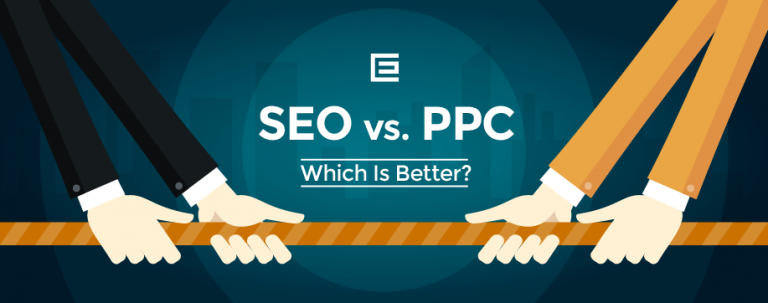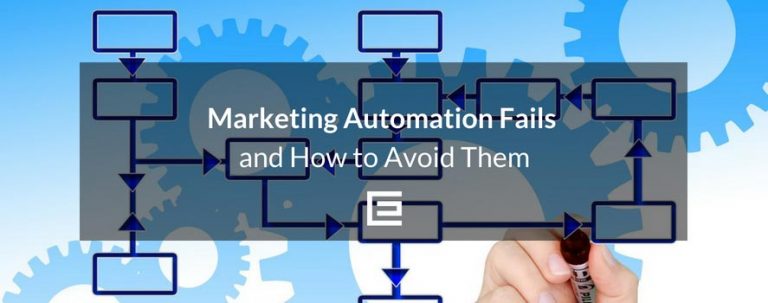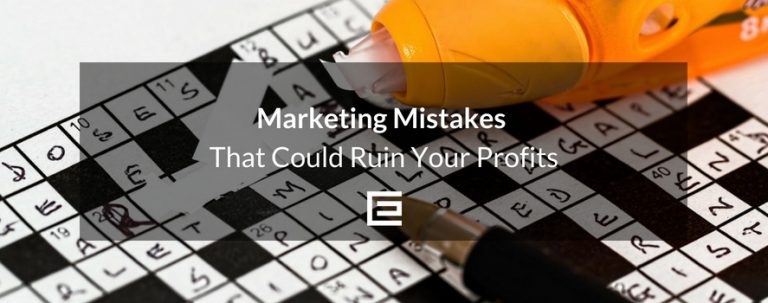Preconceived Notions About PPC
Here’s the thing, I don’t believe in trying to change someone’s minds with opinion. The only thing that matters is the math behind it. Fortunately, with PPC marketing, there’s an easy way to tell if it’s a good investment. If you get more money out than you put into it, you know it’s a good investment, regardless of what your feelings about it are.View Case Study: 9 Times More Website Traffic for a Regional Trailer Sales Company
Measuring PPC Return on Investment
Pay-per-click marketing gives you the ability to measure your return on investment with a great deal of precision. It is a very simple formula, which we will expand upon, but first, let’s address some of the most common concerns we hear about PPC. When asked why they don’t believe in PPC, the naysayers usually respond with something that sounds very much like the following Yogi Berra quote (talking about a restaurant): “Nobody goes there anymore. It’s too crowded.” (If you are not familiar with Yogi Berra, he was a great baseball player who was also famous for saying things that didn’t make a lot of sense.) So using Yogi’s logic, pay per click must not be worth it since too many people are fighting over a few ad spots that aren’t worthwhile? That’s a head scratcher. Here’s another gem: “Nobody clicks on those.” The idea here is that everyone prefers the organic results. First of all, that’s not true, at all. What’s crazy about this statement though isn’t that it’s completely inaccurate, it’s the logic behind it. Even if it was true that no one clicks on ads, you are paying per click, so it wouldn’t cost you anything anyway. Where’s the drawback? Last but not least: “I tried PPC once, and it didn’t work.” I tried to skateboard once, and I didn’t manage to pull off any gnarly 720’s on the halfpipe, dude. I just took one push, and immediately fell and hurt myself. Does that mean skateboards don’t work? No, it means I’m really bad at it.
Google AdWords for The Raleigh Underwater Basket Weaving School
For the sake of easy math, we are going to pretend you are the proprietor of The Raleigh Underwater Basket Weaving School, and you sell an underwater basket weaving certification course for $1500 – a small price to pay for the life skills acquired. After expenses, you make $1,000 per sale. That is your profit. You are paying $5 per click for the keyword Raleigh underwater basket weaving. You don’t think your campaign is really working, but you really have no idea, because you don’t have conversion tracking set up. Maybe you don’t know what a conversion is. A conversion is when a visitor on your site takes a desired action. This usually means filling out a contact form, calling you, or making a purchase. Different advertisers have different goals, so there are other kinds of conversions, but these are the most common.Your AdWords Conversion Rate
You add conversion tracking and now you know that you’ve got a 2% conversion rate. That means that 1 out of 50 people who visit your site via your paid ad call you or fill out a contact form, making your cost per lead $250 ($5 cost per click X 50). A ratio of 1 out of 50 sounds pretty terrible, but it’s actually a fairly typical conversion rate. Do you think your campaign is working now?Your PPC Leads Are Junk
“Well,” you complain, “it seems like most of the people who contact us don’t end up turning into customers. The leads are no good.” Your low morale is based on vague data because you have to track your own lead conversion rate. When you do make a sale, you need to learn where it initially came from. Asking them is one way to find out. A good Customer Relationship Management software (CRM) may be able to track that for you. You just need to make sure you don’t forget to associate the sale with the contact in your CRM. After keeping really close track of your sales and where they came from, you find out that 10% of your leads turn into customers. That’s not too shabby. Now, that puts you at a cost of $2,500 per acquisition ($250/lead at 10% conversion rate). You make $1,000 per sale, so clearly that is still not going to cut it.Responding To Your Web Leads Within Five Minutes
How quickly do you respond to your contact form submissions? 24 to 48 hours? I sincerely hope not. You need to do much better than that. Try five minutes. We do not live in an age where people are willing to wait for information. Our fictional underwater basket weaving school may not have a lot of local competition, but if you think someone looking for a plumber, a lawyer, a vet, or a pest control company isn’t going to immediately contact the next company in line when you don’t answer or respond immediately, you are dead wrong. Businesses lose a staggering amount of sales due to a lack of urgency in this department. According to research from InsideSales.com, if you follow up with web leads within five minutes, you are nine times more likely to convert them. I believe this statistic wholeheartedly, but let’s be skeptics and say this is an exaggeration. We’ll say you are two times more likely to convert instead of nine. Doubling your own lead conversion rate now puts you at a cost of $1,250 per acquisition ($250/lead at 20% conversion rate). We are getting so close to breaking even now, I can taste it. Let’s keep optimizing.Adding Negative Keywords
After examining your search terms report, you learn that a lot of people are clicking on your ad after performing a Google search for “Raleigh underwater basket weaving jobs,” due to the high demand in the area. These people don’t want what you are selling, so none of these visitors turn into sales. You add “jobs” as a negative keyword, and raise your conversion rate from 2% to 3%. Wow, a 1% increase. Big deal, right? Wrong. With your new 3% conversion rate, you are now converting about 1 in 33 visitors into leads as opposed to 1 in 50, bringing your cost per lead down from $250 to about $165. Where’s my calculator? We’re at $825 per acquisition now ($165/lead at 20% conversion rate). At $1,000 profit per sale, we are starting to make a tiny bit of money. Who wants to throw away 80% of their profit though? We still need to get that lower.Raising Quality Scores
Upon further investigation, you see that you have some pretty low quality scores. What is a quality score? In a nutshell, when you have a low click-through rate due to poorly written ads, and your landing page is not as relevant to the search query as it should be, you end up with a low quality score. Having low quality scores will end up making you pay more per click. With high quality scores, you can actually rank higher on the page while paying less per click than advertisers in the spots below you. How do you raise quality scores? We break out your keywords into single keyword ad groups, or as all the cool kids call them, SKAGS. We write really compelling ads specifically tailored to each individual keyword, and we send your clicks to landing pages specifically designed for that search query. Keywords that are very much alike can have significant differences in intent behind them. For Example:- “Underwater Basket Weaving”
- “Underwater Basket Weaving Class Schedule”
- “Nighttime Underwater Basket Weaving Class”
Lower Cost Per Click
With your $4 clicks, your leads are now $132 each, putting your cost per acquisition at $660. We are not finished yet, but consider this for a minute. If your financial advisor got you a 15% ROI on your investments, you’d slap them an enthusiastic high five. But if your PPC analyst turns your $660 into $1k, a 52% return on investment, it’s not worth it? Sheesh, we have to live up to some high standards! Now your AdWords campaign is starting to run like a well-oiled machine. You’ve got conversion tracking set up, good keyword selection, negative keywords covered, small or single keyword ad groups set up, great ads written, and you’ve got great quality scores. You’ve even greatly increased your own lead conversion rate by understanding that your successful sale may hinge on a fast response time, so you are calling people back as if a new lead is a 4 alarm emergency (because it is).Perfecting Your Landing Pages
Are you sending your visitors to your homepage instead of a page specifically designed to address the exact keyword searched? Is your call to action compelling? Does your website just stink overall? You can hire the Michael Jordan of AdWords to run your PPC campaign, and he’s going to be missing layups all day if your landing pages are no good. Again, the topic of landing page design is worthy of its own novel, but we’ll just say that with a masterful landing page design and strategy, you can easily double your conversion rate or more. With a 6% conversion rate instead of a 3% rate, your cost per acquisition is now $330. With a $1,000 profit per sale, you are now getting an over 300% return on investment from your AdWords spend. Remember when you were paying $2500 per acquisition and throwing all your hard earned money away?The Cherry on Top
So… how did you get your customers before? Many business owners will say they came largely from referrals. Won’t your new clients you acquired from AdWords provide you with referrals? Your customers are worth much more than the value of their initial sale. Down the line, your $1k sale could be directly or indirectly responsible for thousands more in sales- all from a $330 investment.In Conclusion
A pay per click marketing campaign can make or break your business. If you are not careful, you can burn through your budget so fast you won’t know what happened. Some industries are more difficult to compete in than others, but more often than not, a professionally crafted campaign that avoids some common pitfalls can yield you a very positive return.If you are looking to lower your cost per lead, increase your conversion rates, and get more paying customers with paid search marketing, call the digital marketing professionals at TheeDigital today at 919-341-8901 or contact us online.
Tags: Paid Search Marketing



